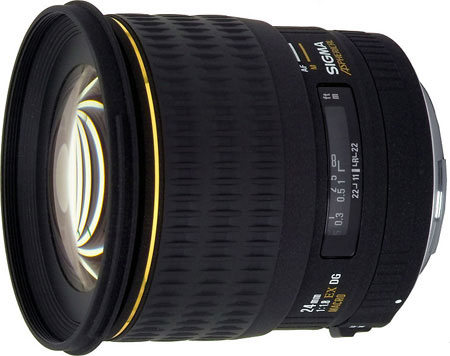The Digital Sensor: A Guide to Understanding Digital Cameras
by Wesley Fink on April 21, 2008 1:00 AM EST- Posted in
- Digital Camera
Lens Equivalence
It is important to understand that a 50mm lens is always a 50mm lens, as that is the focal length. That 50mm specification affects depth-of-field and other image characteristics tied to the lens focal length. However, we can calculate focal lengths for each multiplier that will give the same field of view in the finished image.

With a closer look at field of view and the impact of the changes in field of view, it is easier to understand recent DSLR lens developments. Early DSLR lenses were generally 35mm lenses mounted on the new smaller sensor cameras, except for complete new systems such as the 4/3 digital-only system championed by Olympus.
Using 35mm or full frame lenses was great if your primary interest was telephoto and bird photography, as that 35mm 70-300mm lens that was the second lens for most film buyers now had a field of view like a 112mm-480mm zoom on the new Canon Digital Rebel. Unfortunately interiors, architectural photography, scenes, and fans of the extreme wide angle point of view were left in the cold in the early transition to small digital sensors.
That has been corrected in recent years with lenses designed for smaller sensors, lenses like the Canon 10-22mm, the Nikon 12-24mm, and similar APS C zooms from Sigma, Tamron, and Tokina. Today, whatever your mount and lens multiplier, there are lens choices that can cover the full range of choices for field of view.

A few lenses by Sigma are actually available in every mount and multiplier listed above. Obviously, these few lenses were originally full-frame 35mm that have been carried over with new coatings for improved performance and reduced flare on digital sensor SLRs. One such lens is the Sigma 24mm f1.8. The field of view on the different mounts and sensors this lens will fit illustrates just how the digital sensor size can influence the use of any lens. On the full-frame Canon5D, IDs III, and Nikon D3 this lens is a fast super wide 24mm. On the Canon 1.3X pro models it is still a fast f1.8, but with the FOV of a 31mm moderate wide angle.
On the Nikon D300/D60, the Sony A700/A350, and the Pentax K20D/K200D this fast lens is now a moderate wide angle to near normal lens that shoots images with a 36mm angle of view. On the Canon XSi and 40D we are at 38mm, which most would consider near normal. The Sigma SD14 FOV of 41mm has definitely crept into the normal range. Finally the 4/3 mount version of this lens is one of the "normal" lens choices on the Olympus E3/E510/E410 and Panasonic and Leica 4/3 digital SLR cameras. The 24mm on a 4/3 camera looks at the world as though it is a 48mm f1.8 lens, and competes with the Leica 25mm f1.4 as a much lower cost normal lens.
Similar comparisons could be made in other focal length ranges, but you get the point. Olympus makes a 70-300mm telephoto lens for 4/3, and it is much sought after by "birders", because the view on a 4/3 camera with this lens extends from 140mm to 600mm.










72 Comments
View All Comments
teng029 - Tuesday, April 22, 2008 - link
the rebel xti uses a cmos sensor.http://www.usa.canon.com/consumer/controller?act=M...">http://www.usa.canon.com/consumer/contr...&fca...
melgross - Monday, April 21, 2008 - link
Since when did the XTi use a CCD?